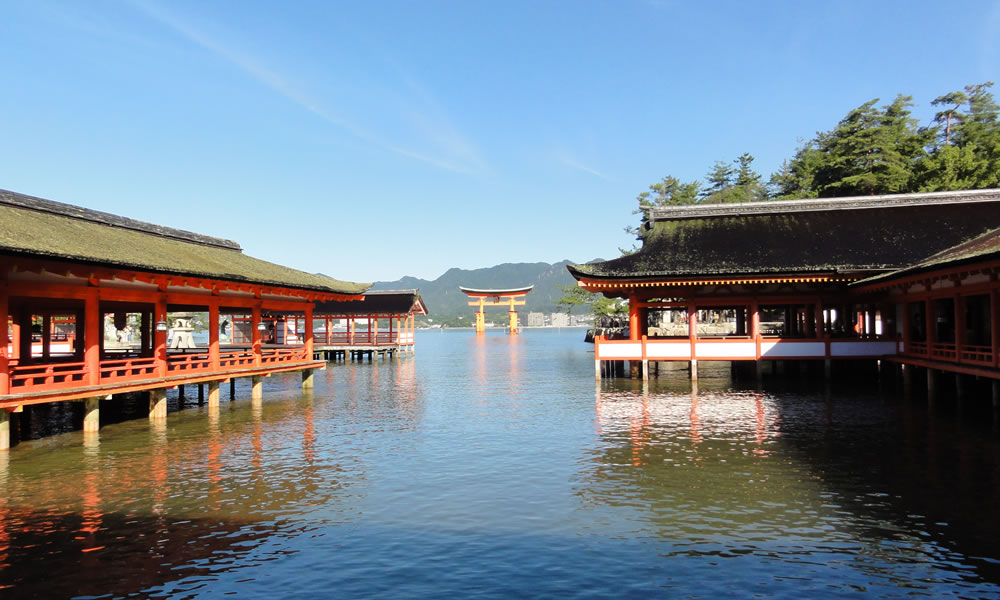Enshrined Deities
市杵島姫命(いちきしまひめのみこと)
田心姫命(たごりひめのみこと)
湍津姫命(たぎつひめのみこと)
Ichikishimahime-no-mikoto
Tagorihime-no-mikoto
Tagitsuhime-no-mikoto
History
The three deities of Itsukushima Shrine were born when Amaterasu Ōmikami (goddess of the sun) and her brother Susanoo-no-mikoto made a pledge on the Celestial Plain, using a jewel and a sword. Since ancient times, they have been revered and worshipped as deities that ensure the well-being of the imperial family, guard the nation and protect seafarers.
When the deities were looking for the best location to settle, Saeki no Kuramoto, who governed the island, received an oracle. Led by a divine crow from the Celestial Plain, he sailed around the island with the deities and decided to build a shrine at this place where the tide ebbs and flows. According to an ancient record, this took place in 593, the year Empress Suiko ascended the throne.
In 1168, Taira no Kiyomori, who worshipped at the shrine, rebuilt it in the shinden-zukuri style, an architectural style in which residences of the nobility were built in those days. As Kiyomori assumed higher posts in the imperial court, not only the Taira clan but many other eminent people also visited the shrine, including members of the imperial family and aristocrats, such as former Emperor Goshirakawa, who had joined a Buddhist order, in 1174 and retired Emperor Takakura in March and September of 1180. They brought with them the culture of Kyoto.
After the Taira regime, the shrine was revered and patronized by the ruling Genji clan, then by Ashikaga Takauji (1305-1358) and Ashikaga Yoshimitsu (1358-1408) and other shoguns of the Muromachi period, and by the Ōuchi and Mōri clans during the Warring States period.
“Miyajima of Aki Province” became well known as one of the three most scenic places in Japan, along with Matsushima and Amanohashidate. In 1996, Itsukushima Shrine was registered as a UNESCO World Cultural Heritage site.



